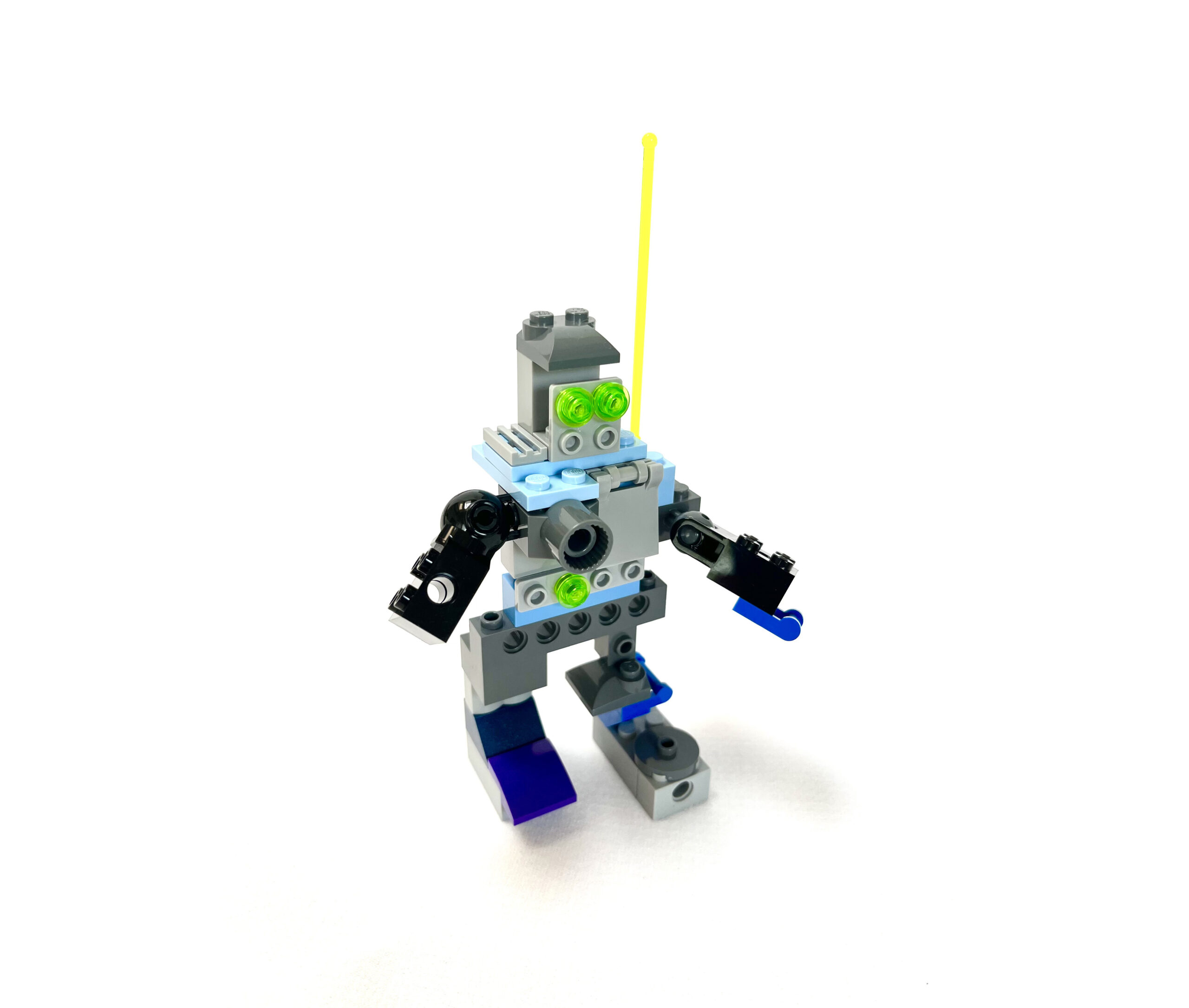Games – Build under a theme with rules
We build different things under a shared theme and we create structure with the building materials and the rules of play. The purpose of the activity is to engage in social play in which we create space for negotiation and freedom of choice.

Procedure
Framework
Suggestion for introduction
We create a motivating environment for the children.
For instance, we can say: “Today, we are practicing building together, and we try to use what we have already learned to reflect on the activity together. Maybe we learn something new, like how we get multiple ideas to fit together. We are building something that falls under a shared theme e.g. a zoo. When we have agreed upon our theme or topic, then we are going to follow three rules. They may sound like the following:
- We each have our own pile of bricks, and we can only build with bricks from our own pile.
- We take turns putting bricks on our model.
- If we all agree upon it, we can exchange bricks. But only if we all agree.”
Time
The activity can be adapted to the framework of one lesson and varied according to the time available and the children’s prerequisites.
Materials
We can use small Lego, or wooden blocks, plus-plus, magnetic tiles, paper, or something else we feel like building with – as long as it can be sorted by the shape of the material. We each get a pile of pieces, approx. 30-40 pieces of the same shape and size (eg. short, long, or big ones).
During the activity
During the play session, the children encounter challenges and successes, where we can stop and help spot what is difficult or what is going well. We can do this in several ways:
Reflection routines
When we get the opportunity to reflect together with the children on what challenges or discoveries arise along the way, we can use one or more reflection routines. It could be, for example, a learning metaphor with a social strategy that we practice, an emoji that describes the feeling we have right now, or a rating of how well we think the building is going. In this way, a reflection routine can help to show and put into words the experiences that the children have during the play session.
Facilitating questions
We can ask facilitating questions to the children along the way, as they naturally arise in the building process. In this way, we facilitate the play session so that we continue the play and at the same time learn something from it. For example:
- I see that you have stopped building. I wonder how we can continue from here?
- I see that you have encountered a challenge. Should we try to solve it together?
- Try to notice what you are doing right now. Do you think this is a collaborative strategy?
Show and Tell
Finally, in the play session, we give a Show and Tell of our construction, so that we have the opportunity to share our experiences, reflections, and feelings about the construction process.
First, we talk about our model and the process of building it. During the Show and Tell, we can use reflection routines and reflective questions to support the discoveries that have been made. For example:
- What went well?
- What was difficult?
- Is there anything that you want to do differently the next time we are building together?